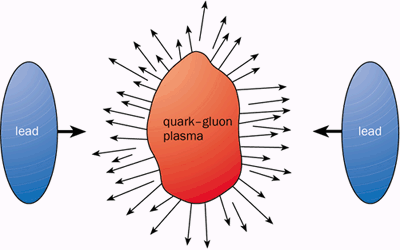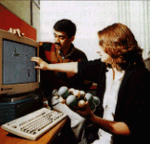Author
Array
(
[0] => linkedin
[1] => facebook
[2] => twitter
[3] => google-plus
[4] => youtube
)
Array
(
[0] => linkedin
[1] => facebook
[2] => twitter
[3] => google-plus
[4] => youtube
)
Array
(
[0] => linkedin
[1] => facebook
[2] => twitter
[3] => google-plus
[4] => youtube
)
Array
(
[0] => linkedin
[1] => facebook
[2] => twitter
[3] => google-plus
[4] => youtube
)
Array
(
[0] => linkedin
[1] => facebook
[2] => twitter
[3] => google-plus
[4] => youtube
)
No Author
Author archive

In the late 1950s, Weber became intrigued by the relationship between gravitational theory and laboratory experiments. His book, General Relativity and Gravitational Radiation, was published in 1961, and his paper describing how to build a gravitational wave detector first appeared in 1969. Weber’s first detector consisted of a freely suspended aluminium cylinder weighing a few […]

Kroemer and Alferov share the prize for their work on semiconductor heterostructures – devices that contain thin layers of different semiconductors, usually based on gallium arsenide, stacked on top of each other. In 1957 Kroemer, then working at the RCA company in Princeton, published the first proposal for a heterostructure transistor. His theoretical work showed […]
 Read article: Shadow cast on dark matter
Read article: Shadow cast on dark matter
During the rapid expansion of the universe after the big bang, the ‘outward’ kinetic energy of the explosion fought against the ‘inward’ gravitational pull of matter. The evolution of the universe is therefore directly linked to the amount of mass (or equivalently energy) it contains. The idea of dark matter was proposed to explain why […]

In a photonic crystal the periodic variation of the dielectric constant results in a range of ‘forbidden’ frequencies called a photonic bandgap (PBG). Electromagnetic waves with a ‘forbidden’ frequency cannot propagate through the crystal. This phenomenon can be exploited to create a waveguide. Adding a strip of linear defects to the PBG material destroys the […]
 Read article: ‘Floating planets’ challenge theorists
Read article: ‘Floating planets’ challenge theorists
Many planets have been discovered outside our solar system, but they are usually detected by observing the wobble of the parent star induced by the gravitational pull of the orbiting planet. Zapatero Osorio’s team, however, observed the floating planets directly by optical and infrared imaging. The objects are dim and reddish – the characteristics of […]
 Read article: A strange quark plasma
Read article: A strange quark plasma
Experiments have recreated the conditions that existed in the early universe before the protons and neutrons that make up the world today had formed
 Read article: Countdown to the Nobel prize
Read article: Countdown to the Nobel prize
The Nobel Foundation celebrates its 100th birthday this year. Peter Rodgers looks at how the winners are selected and some of the discoveries that might be recognized this year
 Read article: New era for European Universities
Read article: New era for European Universities
Universities across Europe are scrapping their traditional degrees in favour of British-style qualifications. But some physicists on the continent believe this will lead to a drop in standards
 Read article: Superconductivity leaves the lab
Read article: Superconductivity leaves the lab
Superconducting magnets are a common tool in many physics and chemistry laboratories, and are used in a host of research applications, including solid-state physics, nuclear-magnetic-resonance chemistry and particle physics. Outside the research lab, the only truly widespread use of superconducting magnets is in magnetic resonance imaging (MRI) in medicine. However, applications of superconducting magnets are […]
 Read article: Beyond understanding 2
Read article: Beyond understanding 2
Over the past 15 years there have been significant increases in the coverage of science in the mass media and the number of hands-on science centres in the UK, two developments that would be expected to foster better “public understanding of science”. But as noted in Who’s Misunderstanding Whom? (see links), a new report on […]
Copyright © 2025 by IOP Publishing Ltd and individual contributors







